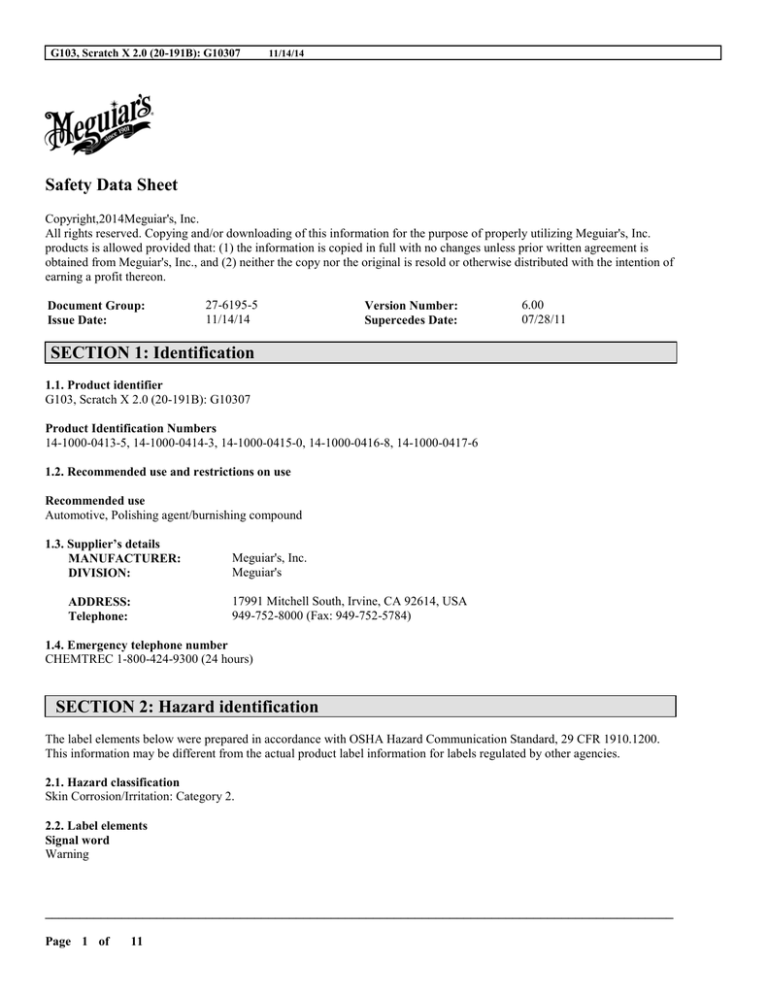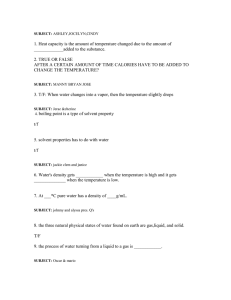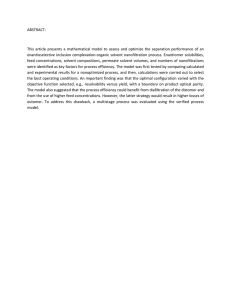
G103, Scratch X 2.0 (20-191B): G10307
11/14/14
Safety Data Sheet
Copyright,2014Meguiar's, Inc.
All rights reserved. Copying and/or downloading of this information for the purpose of properly utilizing Meguiar's, Inc.
products is allowed provided that: (1) the information is copied in full with no changes unless prior written agreement is
obtained from Meguiar's, Inc., and (2) neither the copy nor the original is resold or otherwise distributed with the intention of
earning a profit thereon.
Document Group:
Issue Date:
27-6195-5
11/14/14
Version Number:
Supercedes Date:
6.00
07/28/11
SECTION 1: Identification
1.1. Product identifier
G103, Scratch X 2.0 (20-191B): G10307
Product Identification Numbers
14-1000-0413-5, 14-1000-0414-3, 14-1000-0415-0, 14-1000-0416-8, 14-1000-0417-6
1.2. Recommended use and restrictions on use
Recommended use
Automotive, Polishing agent/burnishing compound
1.3. Supplier’s details
MANUFACTURER:
DIVISION:
ADDRESS:
Telephone:
Meguiar's, Inc.
Meguiar's
17991 Mitchell South, Irvine, CA 92614, USA
949-752-8000 (Fax: 949-752-5784)
1.4. Emergency telephone number
CHEMTREC 1-800-424-9300 (24 hours)
SECTION 2: Hazard identification
The label elements below were prepared in accordance with OSHA Hazard Communication Standard, 29 CFR 1910.1200.
This information may be different from the actual product label information for labels regulated by other agencies.
2.1. Hazard classification
Skin Corrosion/Irritation: Category 2.
2.2. Label elements
Signal word
Warning
__________________________________________________________________________________________
Page 1 of
11
G103, Scratch X 2.0 (20-191B): G10307
11/14/14
Symbols
Exclamation mark |
Pictograms
Hazard Statements
Causes skin irritation.
Precautionary Statements
General:
Keep out of reach of children.
Prevention:
Wear protective gloves.
Wash thoroughly after handling.
Response:
IF ON SKIN: Wash with plenty of soap and water.
If skin irritation occurs: Get medical advice/attention.
Take off contaminated clothing and wash it before reuse.
2.3. Hazards not otherwise classified
None.
13% of the mixture consists of ingredients of unknown acute inhalation toxicity.
SECTION 3: Composition/information on ingredients
Ingredient
Non-Hazardous Ingredients
Medium Aliphatic Solvent Naphtha
White mineral oil (petroleum)
Aluminum Oxide (non-fibrous)
Glycerin
Triethanolamine
C.A.S. No.
Mixture
64742-88-7
8042-47-5
1344-28-1
56-81-5
102-71-6
% by Wt
60 - 90 Trade Secret *
7 - 13 Trade Secret *
10 - 11 Trade Secret *
4 - 10 Trade Secret *
0.5 - 1.5 Trade Secret *
0.5 - 1.5 Trade Secret *
*The specific chemical identity and/or exact percentage (concentration) of this composition has been withheld as a trade
secret.
SECTION 4: First aid measures
4.1. Description of first aid measures
Inhalation:
Remove person to fresh air. If you feel unwell, get medical attention.
__________________________________________________________________________________________
Page 2 of
11
G103, Scratch X 2.0 (20-191B): G10307
11/14/14
Skin Contact:
Immediately wash with soap and water. Remove contaminated clothing and wash before reuse. If signs/symptoms develop,
get medical attention.
Eye Contact:
Flush with large amounts of water. Remove contact lenses if easy to do. Continue rinsing. If signs/symptoms persist, get
medical attention.
If Swallowed:
Rinse mouth. If you feel unwell, get medical attention.
4.2. Most important symptoms and effects, both acute and delayed
See Section 11.1. Information on toxicological effects.
4.3. Indication of any immediate medical attention and special treatment required
Not applicable
SECTION 5: Fire-fighting measures
5.1. Suitable extinguishing media
In case of fire: Use a fire fighting agent suitable for ordinary combustible material such as water or foam to extinguish.
5.2. Special hazards arising from the substance or mixture
None inherent in this product.
Hazardous Decomposition or By-Products
Substance
Hydrocarbons
Carbon monoxide
Carbon dioxide
Irritant Vapors or Gases
Oxides of Nitrogen
Condition
During Combustion
During Combustion
During Combustion
During Combustion
During Combustion
5.3. Special protective actions for fire-fighters
No special protective actions for fire-fighters are anticipated.
SECTION 6: Accidental release measures
6.1. Personal precautions, protective equipment and emergency procedures
Evacuate area. Ventilate the area with fresh air. Refer to other sections of this SDS for information regarding physical and
health hazards, respiratory protection, ventilation, and personal protective equipment.
6.2. Environmental precautions
Avoid release to the environment.
6.3. Methods and material for containment and cleaning up
Contain spill. Working from around the edges of the spill inward, cover with bentonite, vermiculite, or commercially
available inorganic absorbent material. Mix in sufficient absorbent until it appears dry. Remember, adding an absorbent
material does not remove a physical, health, or environmental hazard. Collect as much of the spilled material as possible.
Place in a closed container approved for transportation by appropriate authorities. Clean up residue with detergent and
water. Seal the container. Dispose of collected material as soon as possible.
__________________________________________________________________________________________
Page 3 of
11
G103, Scratch X 2.0 (20-191B): G10307
11/14/14
SECTION 7: Handling and storage
7.1. Precautions for safe handling
Keep out of reach of children. Avoid breathing dust/fume/gas/mist/vapors/spray. Do not get in eyes, on skin, or on
clothing. Do not eat, drink or smoke when using this product. Wash thoroughly after handling.
7.2. Conditions for safe storage including any incompatibilities
Store away from heat. Store away from acids. Store away from strong bases.
SECTION 8: Exposure controls/personal protection
8.1. Control parameters
Occupational exposure limits
If a component is disclosed in section 3 but does not appear in the table below, an occupational exposure limit is not available
for the component.
Ingredient
C.A.S. No. Agency
Limit type
Additional Comments
Triethanolamine
102-71-6
ACGIH
TWA:5 mg/m3
Aluminum Oxide (non-fibrous)
1344-28-1 OSHA
TWA(as total dust):15
mg/m3;TWA(respirable
fraction):5 mg/m3
Aluminum Oxide (non-fibrous)
1344-28-1 CMRG
TWA:1 fiber/cc
Aluminum, insoluble compounds 1344-28-1 ACGIH
TWA(respirable fraction):1
A4: Not class. as human
mg/m3
carcin
Glycerin
56-81-5
OSHA
TWA(as total dust):15
mg/m3;TWA(respirable
fraction):5 mg/m3
Medium Aliphatic Solvent
64742-88-7 CMRG
TWA:100 ppm
Naphtha
White mineral oil (petroleum)
8042-47-5 CMRG
TWA:5 mg/m3;STEL:10
mg/m3
Paraffin oil
8042-47-5 OSHA
TWA(as mist):5 mg/m3
MINERAL OILS,
8042-47-5 ACGIH
TWA(inhalable fraction):5
A4: Not class. as human
HIGHLY-REFINED OILS
mg/m3
carcin
ACGIH : American Conference of Governmental Industrial Hygienists
AIHA : American Industrial Hygiene Association
CMRG : Chemical Manufacturer's Recommended Guidelines
OSHA : United States Department of Labor - Occupational Safety and Health Administration
TWA: Time-Weighted-Average
STEL: Short Term Exposure Limit
CEIL: Ceiling
8.2. Exposure controls
8.2.1. Engineering controls
Use general dilution ventilation and/or local exhaust ventilation to control airborne exposures to below relevant Exposure
Limits and/or control dust/fume/gas/mist/vapors/spray. If ventilation is not adequate, use respiratory protection equipment.
8.2.2. Personal protective equipment (PPE)
Eye/face protection
Eye protection not required.
__________________________________________________________________________________________
Page 4 of
11
G103, Scratch X 2.0 (20-191B): G10307
11/14/14
Skin/hand protection
Select and use gloves and/or protective clothing approved to relevant local standards to prevent skin contact based on the
results of an exposure assessment. Selection should be based on use factors such as exposure levels, concentration of the
substance or mixture, frequency and duration, physical challenges such as temperature extremes, and other use conditions.
Consult with your glove and/or protective clothing manufacturer for selection of appropriate compatible gloves/protective
clothing.
Gloves made from the following material(s) are recommended: Neoprene
Respiratory protection
An exposure assessment may be needed to decide if a respirator is required. If a respirator is needed, use respirators as part
of a full respiratory protection program. Based on the results of the exposure assessment, select from the following respirator
type(s) to reduce inhalation exposure:
Half facepiece or full facepiece air-purifying respirator suitable for organic vapors and particulates
For questions about suitability for a specific application, consult with your respirator manufacturer.
SECTION 9: Physical and chemical properties
9.1. Information on basic physical and chemical properties
Liquid
General Physical Form:
Odor, Color, Grade:
Odor threshold
pH
Melting point
Boiling Point
Flash Point
Evaporation rate
Flammability (solid, gas)
Flammable Limits(LEL)
Flammable Limits(UEL)
Vapor Pressure
Sweet hydrocarbon odor; White, creamy, viscous lotion
No Data Available
8 - 8.8
Not Applicable
No Data Available
Flash point > 93 °C (200 °F)
No Data Available
Not Applicable
No Data Available
No Data Available
No Data Available
Vapor Density
No Data Available
Density
Specific Gravity
1.18 g/cm3
1.18 [Ref Std: WATER=1]
Solubility in Water
Solubility- non-water
Moderate
No Data Available
Partition coefficient: n-octanol/ water
Autoignition temperature
Decomposition temperature
Viscosity
Volatile Organic Compounds
No Data Available
No Data Available
No Data Available
22,000 - 28,000 centipoise
11.00 % weight
SECTION 10: Stability and reactivity
10.1. Reactivity
This material is considered to be non reactive under normal use conditions.
__________________________________________________________________________________________
Page 5 of
11
G103, Scratch X 2.0 (20-191B): G10307
11/14/14
10.2. Chemical stability
Stable.
10.3. Possibility of hazardous reactions
Hazardous polymerization will not occur.
10.4. Conditions to avoid
Heat
10.5. Incompatible materials
Strong acids
Strong bases
10.6. Hazardous decomposition products
Substance
None known.
Condition
Refer to section 5.2 for hazardous decomposition products during combustion.
SECTION 11: Toxicological information
The information below may not be consistent with the material classification in Section 2 if specific ingredient
classifications are mandated by a competent authority. In addition, toxicological data on ingredients may not be
reflected in the material classification and/or the signs and symptoms of exposure, because an ingredient may be
present below the threshold for labeling, an ingredient may not be available for exposure, or the data may not be
relevant to the material as a whole.
11.1. Information on Toxicological effects
Signs and Symptoms of Exposure
Based on test data and/or information on the components, this material may produce the following health effects:
Inhalation:
Respiratory Tract Irritation: Signs/symptoms may include cough, sneezing, nasal discharge, headache, hoarseness, and nose
and throat pain.
Skin Contact:
Skin Irritation: Signs/symptoms may include localized redness, swelling, itching, dryness, cracking, blistering, and pain.
Eye Contact:
Contact with the eyes during product use is not expected to result in significant irritation.
Ingestion:
Gastrointestinal Irritation: Signs/symptoms may include abdominal pain, stomach upset, nausea, vomiting and diarrhea.
Toxicological Data
If a component is disclosed in section 3 but does not appear in a table below, either no data are available for that endpoint or
the data are not sufficient for classification.
Acute Toxicity
Name
Overall product
Overall product
Route
Dermal
Inhalation-
Species
Value
No data available; calculated ATE > 5,000 mg/kg
No data available; calculated ATE > 50 mg/l
__________________________________________________________________________________________
Page 6 of
11
G103, Scratch X 2.0 (20-191B): G10307
Overall product
Medium Aliphatic Solvent Naphtha
Medium Aliphatic Solvent Naphtha
White mineral oil (petroleum)
Medium Aliphatic Solvent Naphtha
White mineral oil (petroleum)
Aluminum Oxide (non-fibrous)
Aluminum Oxide (non-fibrous)
Aluminum Oxide (non-fibrous)
Triethanolamine
Triethanolamine
Glycerin
Glycerin
11/14/14
Vapor(4 hr)
Ingestion
InhalationVapor
Dermal
Dermal
Ingestion
Ingestion
Dermal
InhalationDust/Mist
(4 hours)
Ingestion
Dermal
Ingestion
Dermal
Ingestion
No data available; calculated ATE > 5,000 mg/kg
LC50 estimated to be 20 - 50 mg/l
Rabbit
Rabbit
Rat
Rat
Rat
LD50 > 3,000 mg/kg
LD50 > 2,000 mg/kg
LD50 > 5,000 mg/kg
LD50 > 5,000 mg/kg
LD50 estimated to be > 5,000 mg/kg
LC50 > 2.3 mg/l
Rat
Rabbit
Rat
Rabbit
Rat
LD50 > 5,000 mg/kg
LD50 > 2,000 mg/kg
LD50 9,000 mg/kg
LD50 estimated to be > 5,000 mg/kg
LD50 > 5,000 mg/kg
Species
Rabbit
Rabbit
Rabbit
Rabbit
Rabbit
Value
Irritant
No significant irritation
No significant irritation
Minimal irritation
No significant irritation
Species
Rabbit
Rabbit
Rabbit
Rabbit
Rabbit
Value
No significant irritation
Mild irritant
No significant irritation
Mild irritant
No significant irritation
Species
Guinea
pig
Guinea
pig
Human
Value
Not sensitizing
ATE = acute toxicity estimate
Skin Corrosion/Irritation
Name
Medium Aliphatic Solvent Naphtha
White mineral oil (petroleum)
Aluminum Oxide (non-fibrous)
Triethanolamine
Glycerin
Serious Eye Damage/Irritation
Name
Medium Aliphatic Solvent Naphtha
White mineral oil (petroleum)
Aluminum Oxide (non-fibrous)
Triethanolamine
Glycerin
Skin Sensitization
Name
Medium Aliphatic Solvent Naphtha
White mineral oil (petroleum)
Triethanolamine
Glycerin
Guinea
pig
Not sensitizing
Some positive data exist, but the data are not
sufficient for classification
Not sensitizing
Respiratory Sensitization
Name
Species
Value
Germ Cell Mutagenicity
Name
Medium Aliphatic Solvent Naphtha
Medium Aliphatic Solvent Naphtha
Route
In vivo
In Vitro
White mineral oil (petroleum)
Aluminum Oxide (non-fibrous)
Triethanolamine
Triethanolamine
In Vitro
In Vitro
In Vitro
In vivo
Value
Not mutagenic
Some positive data exist, but the data are not
sufficient for classification
Not mutagenic
Not mutagenic
Not mutagenic
Not mutagenic
__________________________________________________________________________________________
Page 7 of
11
G103, Scratch X 2.0 (20-191B): G10307
11/14/14
Carcinogenicity
Name
Medium Aliphatic Solvent Naphtha
Route
Dermal
Species
Mouse
Medium Aliphatic Solvent Naphtha
Inhalation
White mineral oil (petroleum)
White mineral oil (petroleum)
Dermal
Inhalation
Aluminum Oxide (non-fibrous)
Triethanolamine
Inhalation
Dermal
Triethanolamine
Ingestion
Human
and
animal
Mouse
Multiple
animal
species
Rat
Multiple
animal
species
Mouse
Glycerin
Ingestion
Mouse
Value
Some positive data exist, but the data are not
sufficient for classification
Some positive data exist, but the data are not
sufficient for classification
Not carcinogenic
Not carcinogenic
Not carcinogenic
Not carcinogenic
Some positive data exist, but the data are not
sufficient for classification
Some positive data exist, but the data are not
sufficient for classification
Reproductive Toxicity
Reproductive and/or Developmental Effects
Name
Route
Value
Species
Test Result
Medium Aliphatic Solvent Naphtha
Inhalation
Not toxic to development
Rat
NOAEL 2.4
mg/l
White mineral oil (petroleum)
Ingestion
Not toxic to female reproduction
Rat
White mineral oil (petroleum)
Ingestion
Not toxic to male reproduction
Rat
White mineral oil (petroleum)
Ingestion
Not toxic to development
Rat
Triethanolamine
Ingestion
Not toxic to development
Mouse
Glycerin
Ingestion
Not toxic to female reproduction
Rat
Glycerin
Ingestion
Not toxic to male reproduction
Rat
Glycerin
Ingestion
Not toxic to development
Rat
NOAEL
4,350
mg/kg/day
NOAEL
4,350
mg/kg/day
NOAEL
4,350
mg/kg/day
NOAEL
1,125
mg/kg/day
NOAEL
2,000
mg/kg/day
NOAEL
2,000
mg/kg/day
NOAEL
2,000
mg/kg/day
Exposure
Duration
during
organogenesi
s
13 weeks
13 weeks
during
gestation
during
organogenesi
s
2 generation
2 generation
2 generation
Target Organ(s)
Specific Target Organ Toxicity - single exposure
Name
Route
Target Organ(s)
Value
Species
Test Result
Medium Aliphatic Solvent
Naphtha
Inhalation
central nervous
system depression
May cause drowsiness or
dizziness
Human
and
animal
NOAEL Not
available
Medium Aliphatic Solvent
Naphtha
Inhalation
respiratory irritation
Medium Aliphatic Solvent
Naphtha
Inhalation
nervous system
Some positive data exist, but the
data are not sufficient for
classification
Some positive data exist, but the
data are not sufficient for
classification
Exposure
Duration
NOAEL Not
available
Dog
NOAEL 6.5
mg/l
4 hours
__________________________________________________________________________________________
Page 8 of
11
G103, Scratch X 2.0 (20-191B): G10307
11/14/14
Specific Target Organ Toxicity - repeated exposure
Name
Route
Target Organ(s)
Value
Species
Test Result
Medium Aliphatic Solvent
Naphtha
Inhalation
nervous system
Rat
LOAEL 4.6
mg/l
Medium Aliphatic Solvent
Naphtha
Inhalation
kidney and/or
bladder
Rat
LOAEL 1.9
mg/l
13 weeks
Medium Aliphatic Solvent
Naphtha
Inhalation
respiratory system
90 days
Inhalation
NOAEL 5.6
mg/l
12 weeks
Medium Aliphatic Solvent
Naphtha
Inhalation
bone, teeth, nails,
and/or hair | blood |
liver | muscles
heart
Multiple
animal
species
Rat
NOAEL 0.6
mg/l
Medium Aliphatic Solvent
Naphtha
Some positive data exist, but the
data are not sufficient for
classification
Some positive data exist, but the
data are not sufficient for
classification
Some positive data exist, but the
data are not sufficient for
classification
All data are negative
All data are negative
NOAEL 1.3
mg/l
90 days
White mineral oil
(petroleum)
Ingestion
hematopoietic
system
Multiple
animal
species
Rat
90 days
White mineral oil
(petroleum)
Ingestion
liver | immune
system
Aluminum Oxide
(non-fibrous)
Inhalation
pneumoconiosis |
pulmonary fibrosis
NOAEL
1,381
mg/kg/day
NOAEL
1,336
mg/kg/day
NOAEL Not
available
Triethanolamine
Dermal
kidney and/or
bladder
2 years
Triethanolamine
Dermal
liver
Triethanolamine
Ingestion
kidney and/or
bladder
Triethanolamine
Ingestion
liver
Glycerin
Inhalation
respiratory system
NOAEL
2,000
mg/kg/day
NOAEL
4,000
mg/kg/day
LOAEL
1,000
mg/kg/day
NOAEL
1,600
mg/kg/day
NOAEL 3.91
mg/l
Glycerin
Inhalation
Ingestion
NOAEL 3.91
mg/l
NOAEL
10,000
mg/kg/day
14 days
Glycerin
heart | liver | kidney
and/or bladder
endocrine system |
hematopoietic
system | liver |
kidney and/or
bladder
Some positive data exist, but the
data are not sufficient for
classification
Some positive data exist, but the
data are not sufficient for
classification
Some positive data exist, but the
data are not sufficient for
classification
Some positive data exist, but the
data are not sufficient for
classification
Some positive data exist, but the
data are not sufficient for
classification
Some positive data exist, but the
data are not sufficient for
classification
Some positive data exist, but the
data are not sufficient for
classification
Some positive data exist, but the
data are not sufficient for
classification
All data are negative
All data are negative
Rat
Human
Multiple
animal
species
Mouse
Rat
Guinea
pig
Rat
Rat
Rat
Exposure
Duration
6 months
90 days
occupational
exposure
13 weeks
2 years
24 weeks
14 days
2 years
Aspiration Hazard
Name
Medium Aliphatic Solvent Naphtha
White mineral oil (petroleum)
Value
Aspiration hazard
Aspiration hazard
Please contact the address or phone number listed on the first page of the SDS for additional toxicological information
on this material and/or its components.
SECTION 12: Ecological information
Ecotoxicological information
Please contact the address or phone number listed on the first page of the SDS for additional ecotoxicological information on this material
and/or its components.
__________________________________________________________________________________________
Page 9 of
11
G103, Scratch X 2.0 (20-191B): G10307
11/14/14
Chemical fate information
Please contact the address or phone number listed on the first page of the SDS for additional chemical fate information on this material
and/or its components.
SECTION 13: Disposal considerations
13.1. Disposal methods
Dispose of contents/ container in accordance with the local/regional/national/international regulations.
Dispose of waste product in a permitted industrial waste facility. As a disposal alternative, incinerate in a permitted waste
incineration facility. Proper destruction may require the use of additional fuel during incineration processes. Empty
drums/barrels/containers used for transporting and handling hazardous chemicals (chemical substances/mixtures/preparations
classified as Hazardous as per applicable regulations) shall be considered, stored, treated & disposed of as hazardous wastes
unless otherwise defined by applicable waste regulations. Consult with the respective regulating authorities to determine the
available treatment and disposal facilities.
SECTION 14: Transport Information
General Transportation Statement:
This product does not require classification by DOT, IATA, ICAO or IMDG
Please contact the emergency numbers listed on the first page of the MSDS for Transportation Information for this material.
SECTION 15: Regulatory information
15.1. US Federal Regulations
Contact manufacturer for more information
311/312 Hazard Categories:
Fire Hazard - No
Pressure Hazard - No
Reactivity Hazard - No
Immediate Hazard - Yes
Delayed Hazard - No
15.2. State Regulations
Contact manufacturer for more information
15.3. Chemical Inventories
The components of this product are in compliance with the chemical notification requirements of TSCA.
Contact manufacturer for more information
15.4. International Regulations
Contact manufacturer for more information
This SDS has been prepared to meet the U.S. OSHA Hazard Communication Standard, 29 CFR 1910.1200.
SECTION 16: Other information
NFPA Hazard Classification
Health: 1 Flammability: 1 Instability: 0 Special Hazards: None
__________________________________________________________________________________________
Page 10 of
11
G103, Scratch X 2.0 (20-191B): G10307
11/14/14
National Fire Protection Association (NFPA) hazard ratings are designed for use by emergency response personnel to address
the hazards that are presented by short-term, acute exposure to a material under conditions of fire, spill, or similar
emergencies. Hazard ratings are primarily based on the inherent physical and toxic properties of the material but also include
the toxic properties of combustion or decomposition products that are known to be generated in significant quantities.
Document Group:
Issue Date:
27-6195-5
11/14/14
Version Number:
Supercedes Date:
6.00
07/28/11
DISCLAIMER: The information in this Safety Data Sheet (SDS) is believed to be correct as of the date issued. Meguiar's,
Inc. MAKES NO WARRANTIES, EXPRESSED OR IMPLIED, INCLUDING, BUT NOT LIMITED TO, ANY IMPLIED
WARRANTY OF MERCHANTABILITY OR FITNESS FOR A PARTICULAR PURPOSE OR COURSE OF
PERFORMANCE OR USAGE OF TRADE. User is responsible for determining whether the Meguiar's, Inc. product is fit
for a particular purpose and suitable for user's method of use or application. Given the variety of factors that can affect the
use and application of a Meguiar's, Inc. product, some of which are uniquely within the user's knowledge and control, it is
essential that the user evaluate the Meguiar's, Inc. product to determine whether it is fit for a particular purpose and suitable
for user's method of use or application.
Meguiar's, Inc. provides information in electronic form as a service to its customers. Due to the remote possibility that
electronic transfer may have resulted in errors, omissions or alterations in this information, Meguiar's, Inc. makes no
representations as to its completeness or accuracy. In addition, information obtained from a database may not be as current
as the information in the SDS available directly from Meguiar's, Inc.
Meguiar's, Inc. USA SDSs are available at www.Meguiars.com
__________________________________________________________________________________________
Page 11 of
11





